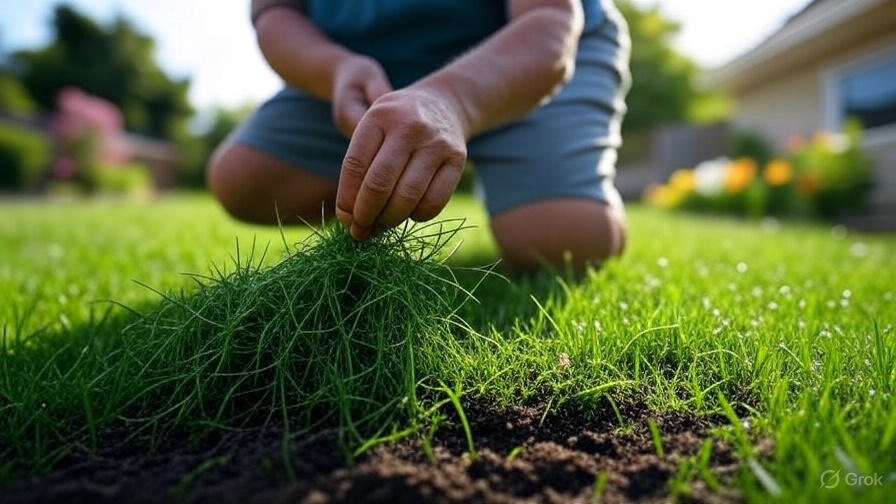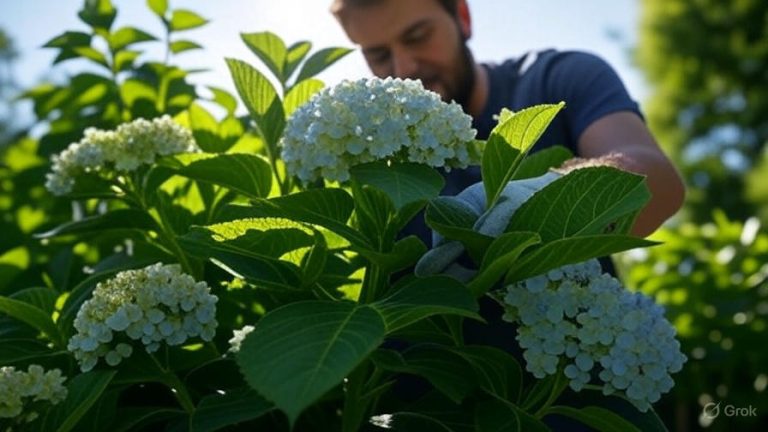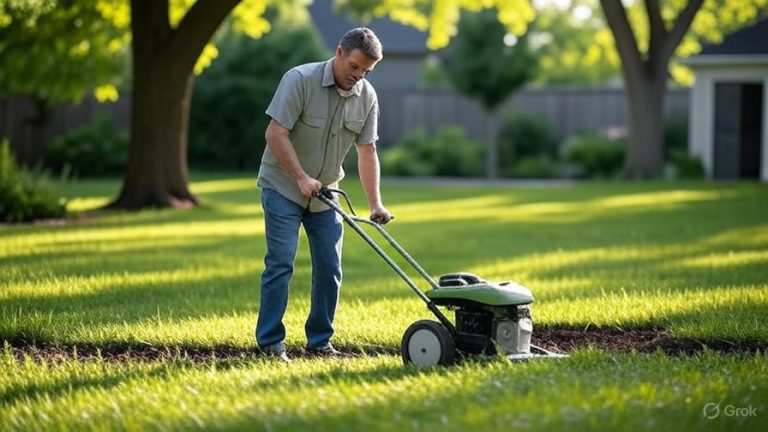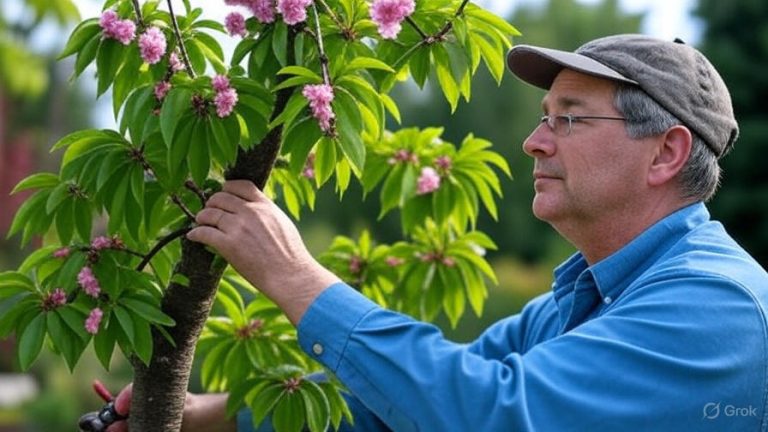How to Get Rid of Crabgrass?
Crabgrass turns beautiful lawns into patchy, unsightly messes. This aggressive annual weed spreads quickly and chokes out healthy grass, leaving homeowners frustrated and searching for solutions. Getting rid of crabgrass requires strategic timing, proper techniques, and consistent effort.
This comprehensive guide reveals proven methods to eliminate crabgrass from your lawn and prevent future infestations. You’ll discover both chemical and natural approaches, timing strategies, and prevention techniques that actually work.
What Makes Crabgrass Such a Persistent Problem
Crabgrass (Digitaria sanguinalis) earned its reputation as one of the most troublesome lawn weeds for good reason. This summer annual grass germinates in spring when soil temperatures reach 55-60°F and thrives in hot, sunny conditions where desirable grass struggles.
The weed’s low-growing, spreading habit allows it to form dense mats that crowd out lawn grass. Each plant produces thousands of seeds before dying with the first frost, ensuring next year’s invasion. Crabgrass also tolerates drought, heat, and compacted soil better than most turfgrass varieties.
Thin or bare spots in lawns provide perfect opportunities for crabgrass establishment. Once established, the weed’s rapid growth rate and prolific seed production make elimination challenging. However, understanding its lifecycle reveals the best windows for effective control.
Timing Your Crabgrass Control Strategy
Success in crabgrass elimination depends heavily on timing your interventions correctly. This annual weed follows a predictable lifecycle that creates specific opportunities for control.
Pre-emergent Control Window
Pre-emergent herbicides work best when applied before crabgrass seeds germinate. In most regions, this critical timing window opens when soil temperatures consistently reach 50-55°F, typically occurring 2-3 weeks before the last expected frost.
Many lawn care professionals use forsythia blooms as a natural indicator for pre-emergent application timing. When forsythia flowers begin opening, soil temperatures usually approach the ideal range for herbicide application.
Local climate patterns affect timing significantly. Northern regions may need applications in late March or early April, while southern areas often require treatment in February or early March. Check with local extension offices for region-specific timing recommendations.
Post-emergent Treatment Timing
Post-emergent crabgrass control becomes necessary when pre-emergent treatments fail or weren’t applied. Young crabgrass plants (less than 3-4 tillers) respond better to post-emergent herbicides than mature plants.
Early summer typically provides the best window for post-emergent applications. Treating crabgrass before it reaches maturity and begins seed production prevents future generations while eliminating current infestations.
Hot weather stress can reduce herbicide effectiveness and potentially damage desirable grass. Plan post-emergent treatments during mild weather periods when temperatures stay below 85°F.
Chemical Control Methods That Work
Chemical herbicides remain the most effective tools for large-scale crabgrass elimination. Both pre-emergent and post-emergent options offer reliable control when used correctly.
Pre-emergent Herbicide Applications
Pre-emergent herbicides create a chemical barrier in the soil that prevents crabgrass seeds from germinating successfully. These products work best on established lawns with thick, healthy turf.
Dithiopyr and prodiamine rank among the most effective pre-emergent active ingredients for crabgrass control. Both provide extended residual activity, typically lasting 3-4 months under normal conditions.
Application technique affects herbicide performance significantly. Use a calibrated spreader to ensure even distribution and proper application rates. Water the herbicide into the soil within 24-48 hours after application, using about 0.5 inches of irrigation.
Avoid disturbing treated soil for several weeks after application. Core aeration, dethatching, or overseeding can break the herbicide barrier and reduce effectiveness.
Post-emergent Herbicide Options
Post-emergent herbicides kill existing crabgrass plants through systemic action. Selective herbicides target grassy weeds while preserving desirable turfgrass, though some temporary discoloration may occur.
Quinclorac-based herbicides provide excellent crabgrass control in cool-season grasses like tall fescue, Kentucky bluegrass, and perennial ryegrass. This active ingredient also controls other difficult grassy weeds.
Fenoxaprop products work well in both cool-season and warm-season grasses. These herbicides show good activity against young crabgrass plants and cause less stress to desirable turf.
Drive (quinclorac) and Acclaim Extra (fenoxaprop) represent popular brand-name options available to homeowners. Professional-grade products often contain higher concentrations or additional active ingredients for enhanced effectiveness.
Application Best Practices
Proper application technique maximizes herbicide effectiveness while minimizing risks to desirable plants. Start by reading and following all label directions carefully.
Spray applications provide better coverage and control than granular formulations for post-emergent treatments. Use a pump sprayer with a fan nozzle to ensure even distribution across treated areas.
Add a surfactant or use herbicides containing built-in surfactants to improve leaf absorption. These additives help herbicides penetrate waxy leaf surfaces and increase effectiveness.
Avoid mowing for 2-3 days before and after herbicide applications. Longer grass blades provide more surface area for herbicide absorption, while recent mowing can stress plants and reduce uptake.
Natural and Organic Control Approaches
Homeowners seeking chemical-free alternatives can employ several natural methods for crabgrass control. These approaches often require more effort and persistence but avoid synthetic herbicide concerns.
Cultural Control Practices
Dense, healthy turfgrass provides the best natural defense against crabgrass invasion. Thick turf shades the soil surface and competes effectively for water, nutrients, and space.
Proper mowing height helps established grass compete with crabgrass. Set mower blades to cut grass at the upper end of the recommended height range for your turf type. Taller grass shades out weed seedlings and develops deeper root systems.
Deep, infrequent watering encourages deep root development in desirable grass while discouraging shallow-rooted weeds. Water early in the morning to reduce disease pressure and improve water uptake efficiency.
Regular fertilization keeps grass healthy and competitive. Follow soil test recommendations for nutrient applications, focusing on appropriate nitrogen timing for your grass type.
Mechanical Removal Methods
Hand-pulling crabgrass plants provides immediate control without chemical applications. This method works best on small infestations or individual plants scattered throughout the lawn.
Pull crabgrass when soil moisture levels are adequate, making root extraction easier. Wet soil allows complete root removal, preventing regrowth from root fragments left in the ground.
Remove pulled plants from the lawn area to prevent seed dispersal. Crabgrass seeds can continue developing on pulled plants if left lying on the lawn surface.
Use a dandelion weeder or similar tool for stubborn plants with extensive root systems. These tools provide better leverage and help extract complete root systems.

Corn Gluten Meal Applications
Corn gluten meal acts as a natural pre-emergent herbicide by inhibiting root development in germinating seeds. This organic byproduct provides moderate crabgrass suppression when applied correctly.
Apply corn gluten meal at rates of 20 pounds per 1,000 square feet for effective weed suppression. Higher application rates may provide better control but increase costs significantly.
Timing corn gluten applications requires the same precision as synthetic pre-emergents. Apply the material 2-3 weeks before expected crabgrass germination in your area.
Water corn gluten meal into the soil after application to activate its pre-emergent properties. Light irrigation or natural rainfall within a few days helps establish the suppressive zone.
Prevention Strategies for Long-term Success
Preventing crabgrass establishment proves more effective and economical than repeated elimination efforts. Long-term prevention focuses on creating conditions that favor desirable grass over weeds.
Soil Health Improvement
Healthy soil supports vigorous turfgrass growth that naturally suppresses weed invasions. Conduct soil tests every 2-3 years to monitor pH, nutrient levels, and organic matter content.
Maintain soil pH between 6.0-7.0 for most turfgrass varieties. Lime applications raise pH in acidic soils, while sulfur can lower pH in alkaline conditions. Proper pH improves nutrient availability and grass health.
Add organic matter through regular topdressing with compost or organic soil amendments. Organic matter improves soil structure, water retention, and nutrient cycling while supporting beneficial microbial activity.
Address soil compaction through core aeration, especially in high-traffic areas. Compacted soils stress desirable grass and create opportunities for weed establishment.
Overseeding and Lawn Renovation
Thick, dense turf crowds out crabgrass and other annual weeds. Overseeding thin areas helps establish competitive grass coverage that resists weed invasion.
Fall overseeding generally provides better results than spring seeding in most climates. Cool, moist fall conditions favor grass establishment while reducing weed competition pressure.
Choose grass varieties adapted to your local climate and growing conditions. Drought-tolerant or disease-resistant cultivars may perform better in challenging sites.
Keep newly seeded areas consistently moist until grass becomes established. Young grass seedlings need regular watering to develop strong root systems capable of competing with weeds.
Proper Lawn Maintenance Practices
Consistent maintenance practices create conditions that favor grass over weeds. Regular mowing, watering, and fertilization help maintain competitive turf density.
Mow grass regularly during active growing seasons to maintain appropriate height without removing more than one-third of the blade length at one time. Sharp mower blades create clean cuts that heal quickly and reduce stress.
Fertilize according to grass type and local recommendations. Cool-season grasses typically benefit from fall nitrogen applications, while warm-season varieties respond better to spring and summer feeding.
Manage thatch buildup through regular dethatching or power raking when necessary. Excessive thatch creates favorable conditions for disease and reduces water and nutrient penetration.
Dealing with Severe Infestations
Heavy crabgrass infestations may require aggressive treatment approaches or complete lawn renovation. Severely infested areas often have underlying problems that need correction for long-term success.
Renovation Strategies
Complete lawn renovation provides the opportunity to start fresh while addressing underlying soil and drainage issues. This approach works best for lawns with more than 50% weed coverage.
Plan renovation projects for optimal grass establishment timing in your region. Fall renovation generally provides better results in most climates due to favorable growing conditions.
Remove existing vegetation through herbicide applications or mechanical methods like sod cutting. Non-selective herbicides like glyphosate kill all vegetation, creating a clean slate for new grass establishment.
Improve soil conditions before establishing new grass. Add organic matter, correct pH imbalances, and address drainage or compaction issues identified during soil testing.
Spot Treatment Approaches
Localized infestations may respond to targeted spot treatments that preserve surrounding healthy grass. This approach works well for scattered patches or specific problem areas.
Use foam applicators or sponge-on herbicides for precise application to individual crabgrass plants. These methods reduce herbicide drift and protect nearby desirable grass.
Cover treated areas with cardboard or tarps to prevent herbicide contact with desirable plants. Remove coverings after the herbicide has dried completely.
Reseed treated spots after crabgrass dies back completely. New grass establishment helps prevent reinfestations in bare areas created by successful weed control.
Troubleshooting Common Control Failures
Crabgrass control failures often result from timing errors, application mistakes, or environmental factors. Understanding common problems helps improve future control efforts.
Pre-emergent Application Issues
Late pre-emergent applications rank among the most common control failures. Herbicide barriers must be established before seed germination begins, requiring precise timing based on soil temperature monitoring.
Inadequate watering after pre-emergent application reduces herbicide effectiveness. Most pre-emergent products require 0.5 inches of water within 24-48 hours to move the active ingredient into the proper soil zone.
Soil disturbance after pre-emergent application breaks the herbicide barrier and allows weed establishment. Avoid aerating, dethatching, or heavy foot traffic on treated areas for several weeks after application.
Post-emergent Treatment Problems
Treating mature crabgrass plants significantly reduces herbicide effectiveness. Plants with more than 4-5 tillers develop resistance to many post-emergent herbicides and may require multiple applications or stronger products.
Environmental stress during herbicide applications can reduce effectiveness and potentially damage desirable grass. Avoid spraying during hot, windy, or drought conditions.
Insufficient coverage or wrong spray technique leads to poor control results. Use appropriate nozzles and spray pressures to ensure thorough coverage of target weeds while minimizing drift.
Seasonal Management Calendar
Successful crabgrass management requires year-round planning and seasonal treatments. This calendar approach helps homeowners stay ahead of weed problems.
Spring Management Tasks
Early spring preparation sets the foundation for season-long crabgrass control. Begin monitoring soil temperatures in late winter to time pre-emergent applications correctly.
Apply pre-emergent herbicides when soil temperatures consistently reach 50-55°F. Use a soil thermometer to monitor temperatures at 2-4 inch depths in multiple lawn areas.
Complete any planned overseeding projects before pre-emergent applications. Most pre-emergent herbicides prevent grass seed germination along with weed seeds.
Address bare spots or thin areas through targeted overseeding or sodding. Dense grass coverage prevents crabgrass establishment better than any herbicide treatment.
Summer Monitoring and Treatment
Summer surveillance helps identify control failures and plan corrective actions. Regular lawn inspections allow early detection of breakthrough crabgrass infestations.
Treat young crabgrass plants with post-emergent herbicides during mild weather periods. Early treatment provides better control and reduces stress on desirable grass.
Maintain proper watering and fertilization schedules to keep grass competitive during hot weather stress periods. Healthy grass recovers better from herbicide applications and resists weed invasions.
Plan fall renovation projects for areas with severe infestations that cannot be controlled through herbicide treatments alone.
Fall Preparation Activities
Fall provides the best opportunity for lawn improvement projects that enhance crabgrass resistance. Cool weather and adequate soil moisture favor grass establishment while reducing weed pressure.
Overseed thin areas with appropriate grass varieties for your region and growing conditions. Dense turf established in fall provides excellent crabgrass suppression the following season.
Apply fall fertilization according to grass type and soil test recommendations. Strong fall growth helps grass compete effectively with weeds the following spring.
Plan and prepare for next year’s pre-emergent applications by checking herbicide supplies and calibrating application equipment.
Crabgrass elimination requires patience, persistence, and proper timing. Success comes from combining effective control methods with prevention strategies that create long-term resistance to weed invasions. Dense, healthy grass remains the best defense against crabgrass and other annual weeds that threaten lawn quality.
Start your crabgrass control program with pre-emergent applications timed to local soil temperature conditions. Back up pre-emergent treatments with post-emergent spot treatments for breakthrough infestations. Most importantly, focus on building thick, competitive turf that naturally suppresses weed establishment and reduces the need for repeated herbicide applications.
The investment in proper crabgrass control pays dividends through improved lawn appearance, reduced maintenance requirements, and increased property value. Your lawn can become the envy of the neighborhood with consistent application of these proven crabgrass elimination strategies.







